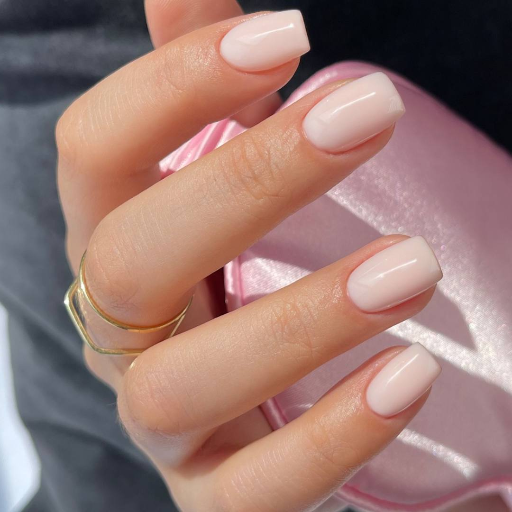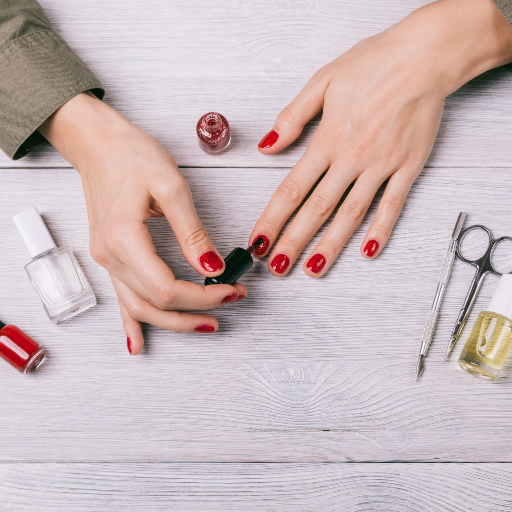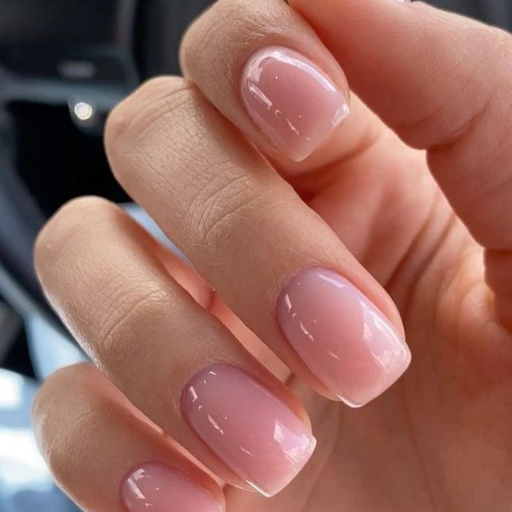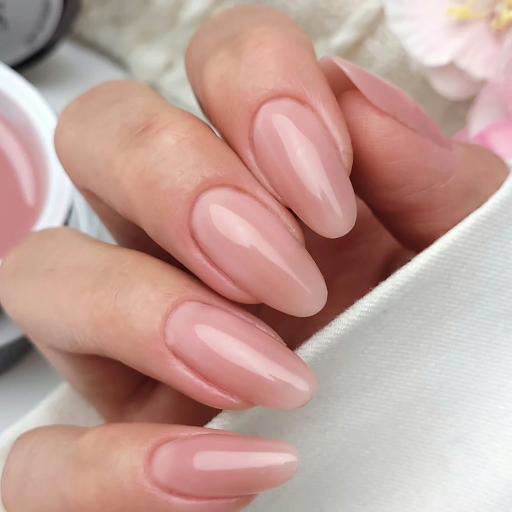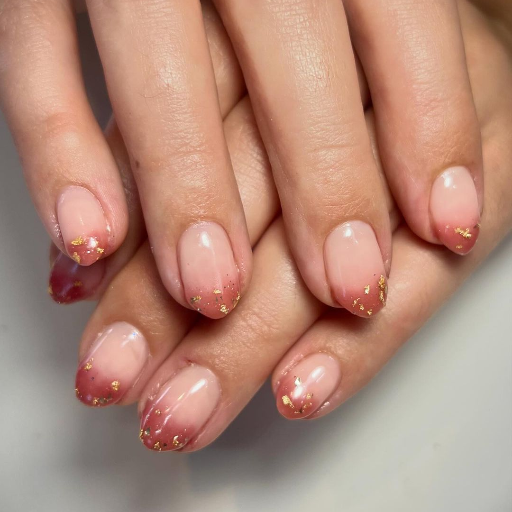Having healthy skin is beautiful yet difficult without an effective routine. For some people, the order of application of the products seems like a mystery which raises questions like ‘Should serum or moisturizer be used first?’ This guide not only aims to educate you in this regard but also seeks to provide the best possible way to utilize your skincare products by going into detail about the science that is involved in layering.
The objective of this review is to explain how and why serums and moisturizers are different, their chemical composition, and how they should be applied. We will go over skin types and specific complications, so you can adjust your routine as necessary. With the information provided here, you will able to understand the significance and proper technique for layering these skin care products.
What is a serum and how does it work?

The serum is a quick-absorbing skin care product that allows one to use highly concentrated ingredients effectively with enhanced penetration into the skin. Usually containing small molecular weight components, serums reach deeper layers such as the dermis to resolve multiple issues like water retention, light wrinkles, spots, or even pesky pimples. These products often claim to include strong agents such as hyaluronic acid, retinol, or vitamin C, that is, they concentrate on specific problems. Unlike creams which sit on the surface and provide emolliency protection, serums are targeted, thus making it an important aspect of a treatment-oriented procedure.
What’s a serum?
A serum is a highly concentrated skincare product formulated to deliver active ingredients directly to the skin. Due to its lightweight consistency and smaller molecular structure, it penetrates deep into the skin to address specific concerns such as fine lines, dark spots, acne, or dehydration. Serums often contain powerful ingredients like antioxidants, peptides, or acids that target skin concerns more effectively compared to traditional moisturizers. Their purpose is to treat, repair, and nourish the skin at a cellular level, making them an integral step in achieving healthier, more radiant skin.
Active Ingredients in a Serum
The effectiveness of a serum is primarily influenced by its active ingredients which are intended to treat particular skin issues. Specific skin issues that are often targeted include:
Vitamin C – A powerful antioxidant that not only helps brighten and lighten the skin but also neutralizes free radicals that are responsible for causing environmental damage.
Hyaluronic Acid – Its remarkable ability to retain moisture makes this serum appealing as it enhances skin elasticity while also making fine lines and wrinkles less prominent.
Retinol (Vitamin A) – This product is known to boost the regeneration of skin cells hence allowing for improved appearance of the skin by lessening wrinkles, fine lines, and acne.
Niacinamide (Vitamin B3) – This is a multipurpose ingredient that works to even out skin complexion, minimize enlarged pores, reduce skin redness, and fortify the skin barrier.
Peptides – Peptides stimulate collagen synthesis which works to improve skin texture by firming up the skin and increasing elasticity while also delaying the signs of aging.
Alpha Hydroxy Acids (AHAs) & Beta Hydroxy Acids (BHAs) – These exfoliating acids allow for an improvement in the appearance of the skin by eliminating all the dead skin and boosting the tone along with targeting and clearing out acne.
The dermatological issues are precisely targeted, once the appropriate skin penetrator is selected. In the case of wanting to achieve satisfactory results, it is important to use a custom-augmented serum and suitable protection from the sun.
Benefits of Using a Serum
Serums contain active ingredients in their purest forms while offering a focused and precise approach to specific skin problems. Serums are lightweight and easy to absorb hence ensuring that their effects are felt as deep as possible in the skin. A hydration routine of around 3-4 times a week which subjects the skin to the serum, helps in moisture retention, complexion enhancement, and fine lines, and addresses issues such as hyperpigmentation, acne, and skin dullness. Additionally, these serums also work excellently as a supplement to widely used daily skin care practices such as moisturizers and other treatments. Owing to their functionality, individuals can use different types of serums designed specifically for their skin requirements, and for these reasons, serums are a critical part of an effective skincare regime.
Understanding moisturizer and its role in skincare

Forming a barrier of the skin prevents its drying out and works as a seal which prevents moisture loss. Moisturizers do this by providing essential water and improving skin’s suppleness as well as smoothness. Working on the skin’s outermost layer, a moisturizer contains humectants, emollients, and occlusives, thereby soothing dryness, flakiness, and irritation. At the same time, they reinforce the skin barrier from the adverse effects of external factors such as ultraviolet rays, pollution, and stressful climatic conditions. People who make use of a moisturizer in their everyday routine are more likely to maintain an even healthier skin tone. Through the application, one also reduces the chances of their skin showing signs of aging and improves the skin texture overall.
How does a moisturizer protect your skin?
Moisturizers help protect the skin by forming an occlusive film that prevents transepidermal water loss (TEWL) and hence ensures water retention in the skin layers. In so doing, they restore the barrier-forming lipids and aid in the reconstruction of the natural lipid barrier which protects against irritants, allergens, and other harmful environmental factors. Apart from this, moisturizers restore skin surface structure and tissue elasticity through the inclusion of nourishing components such as ceramides, hyaluronic acid, glycerin, etc. These components help to substantially moisturize the skin and strengthen its structural framework along with easing irritation and improving the overall strength of the skin.
Types of Moisturizers for Different Skin Types
Dry Skin
If the skin is dry, it is advisable to use products that heal the skin barrier and restore hydration. Such products should contain occlusives such as petrolatum or shea butter and humectants such as hyaluronic acid and glycerin. Essentially, all of these ingredients are intended to accomplish the moisture-attracting, moisture-retaining, and moisture-protecting functions.
Oily Skin
When dealing with oily skin, wearable non-comedogenic, oil-free, and light moisturizers are a must. Ingredients such as niacinamide or hyaluronic acid contained in gel or water-based formulations provide moisturization without causing clogged pores which in turn helps normalize the production of sebum while locking in the moisture in the skin.
Combination Skin
For Combination skin one has to strike a balance, thus most gel creams or light lotions tend to work best. It seems appropriate to recommend gel creams with moderate levels of humectants such as glycerin and light emollients for drier parts of the skin, but not too much to greasy other areas of the skin.
Sensitive Skin
For sensitive skin, adequate moisturizers should contain soothing ingredients such as ceramides, aloe vera, or colloidal oatmeal and are free of fragrance. These products aim to curb inflammation while enhancing the strength of the barrier against external injuries.
Aging or Mature Skin
Peptide creams, retinol, and hyaluronic acid are all suggested for aging skin as they act to put moisture in the skin, make fine lines less apparent, and increase elasticity and firmness. Such products are anti-aging oriented.
Choosing the appropriate type of moisturizer depending on the individual’s requirements, achieves skin health and effectiveness as well as helps resolve certain problems posed by each skin type.
Key Moisturizer Ingredients to Look For
Hyaluronic Acid
Hyaluronic acid is an overly used skin-care ingredient, with the only advantage being that it is a “moisturizer”. It works by drawing water to the surface of one’s skin.
Ceramides
These are lipids essential for people with dry or sensitive skin. They hold great importance in keeping the skin safe from external irritants by strengthening its natural barrier.
Peptides
Collagen synthesis is stimulated by these issued amino acid sequences which makes the skin firmer and less wrinkled. Peptides are useful for anti-aging formulations.
Niacinamide
Vitamin B3 or Niacin is a supplement with anti-inflammatory properties that help to improve one’s overall skin texture while regulating oil production and reducing the enlarged size of pores.
Glycerin
Another essential ingredient good for people with sensitive skin, glycerin is used by many to ‘hydrate’ their skin by spreading back the water that pours out from it.
Retinol
Retinol, a type of vitamin A, replaces dead cells, fixes an uneven tone, and reduces fine lines. This supplementation is more effective to be used in night moisturizers especially if one has aged or mature skin.
The following vitamin terms also serve as an Anti-oxidant: Vitamin C and vitamin E.
Antioxidants are critical in maintaining a youthful appearance, as they not only protect the skin from free radical damage but also enhance moisture retention and promote skin repair.
Consumers who are aware of the characteristics and effects of these ingredients will be able to choose the appropriate moisturizers according to their skin needs.
Should you apply serum or moisturizer first?

One important rule when choosing the order of applying a moisturizer and serum is to start with the product that is the thinnest in consistency and finish with the thickest product. It is understandable as serums are lighter and contain a higher concentration of active ingredients that can penetrate deeper layers of the skin. In contrast, moisturizers are much thicker in consistency and offer a barrier that protects against the loss of water as well as supplementing the advantages offered by the preceding serum. Consequently, it is always paramount to put on the serum first as it allows for the most efficient use of the serum’s active ingredients and increases the chances of deep penetration into the skin.
Order to apply your skincare products
In order to gain maximum results from your skincare regime, it is essential that you follow a certain order that is based on the type and functionality of the product used.
Cleanser –Start by washing the face first by applying a cleanser, this will remove the dirt, oil, and makeup from the face surface providing a clean area for the absorption of the other products.
Toner (Optional) – These toners are also beneficial to the skin, as they offer hydration and balance out the skin’s pH levels. Moreover, the toners can also set the skin for improved absorption
Serum – Following the toners, serums are next in order as they contain a large amount of active ingredients like antioxidants or hyaluronic acids. Active ingredients are good because they target specific concerns, such as wrinkles or sagging skin.
Eye Cream – The eye cream should be the first product applied before the bulk of other products in order to target and take care of the sensitive skin underneath the eyes.
Moisturizer – In order to retain moisture and add another layer of protection, A moisturizer can be used. This will help in locking the effects of the other treatments used.
Sunscreen (Morning Routine) – Make sure that the last step of your morning routine is applying sunscreen, as Is essential in protecting skin from UV radiation, however, ensuring you use a broad-spectrum type is vital.
Retinol or Overnight Treatments (Evening Routine) – For application at night, retinol or spot treatments work best when applied after serum but before moisturizer.
This order is very important for the fulfillment of the skincare regimen, and also, for the fact that the active components do not conflict with each other’s actions.
Factors Affecting the Order: Serum vs Moisturizer
The sequence in which the serum and moisturizer are applied can be affected by the ingredients, the function, and even the concerns of an individual’s skin. Serums often serve as a precursor for moisturizers, given their lightweight yet potency with hydrating components such as hyaluronic acid, vitamin C, or niacinamide made to reach the deeper level of the skin. In contrast, moisturizers are applied on the outer skin: they secure water within the skin layers. Thus, it is stated that the application of serum is done first in the regimen because it contains more active ingredients, which can be absorbed into the skin before a moisture cream protects it.
However, the order can also vary depending on the moisturizer and serum applied. For instance, water-based serums do well under most moisturizers whereas oil-based serums can only be used after a water-based moisturizer to mitigate blending problems. The skin type is also important; oily skin people may like to use gel-based moisturizers which suit light-weight serums or a dry skin type may suit thicker creams used on top of hydrating serums. In the end, it is established that the right order of application of the products enhances the effectiveness of those products throughout one’s body as intended.
Expert Tips on Applying Serum and Moisturizer
When layering skincare products, always begin with a clean, dry face to ensure optimal absorption. Apply serum first, as it delivers concentrated active ingredients directly to the skin. Use a small amount—typically a pea-sized drop—and gently press or pat the serum into your skin rather than rubbing, it to avoid irritation. Allow the serum 1-2 minutes to fully absorb before following up with a moisturizer. The moisturizer acts as an occlusive layer, sealing in the serum and providing hydration.
For best results, consider your skin type and the formulation of your products. Water-based serums should be applied under all other layers, while oil-based serums may need to follow lighter formulations. Ensure compatibility between products to avoid pilling or reduced efficacy. Finally, during daytime routines, always complete your regimen with broad-spectrum sunscreen to protect your skin from UV damage, especially if your serum contains photosensitive ingredients like vitamin C or retinol.
How do skin types and concerns affect your skincare routine?

Taking into account the skin type and individual issues is crucial to creating an effective skincare regimen. Oily skin, on the other hand, requires lightweight and non-comedogenic products that offer maximum coverage while preventing oil build-up while people with dry skin have a more pronounced need for creams or lotions that contain plenty of moisture and moisture-promoting ingredients. As for people with delicate areas, they should look for mild and unscented products to avoid further aggravation. At the same time, people suffering from skin-related issues like acne and aging should use salicylic acid, niacinamide, or peptides for extra coverage. Understanding your needs will help you pick the right compatible products that are guaranteed to satisfy your needs without posing any threat to the rest of your skin.
Choosing the right products for dry skin
Search out formulations explicitly developed to help dry skin as you look for skincare products. Ingredients targeting skin barrier maintenance should be added such as glycerin, ceramides, squalane, and hyaluronic acid. In terms of processes that assist with your routine, it’s best to avoid easily dehydrating one’s skin through any dry oil-free foaming cleanser and opt for a cream-based one or a non-foaming one. For extra nourishment, use oil-based serums or hydrating ones. Emollient Moisturizers that contain shea butter or other fatty acids will keep skin moisturized all day long. Additionally, consider a non-drying sunscreen with moisturizing elements which helps to repair against UV damage Moreover, strictly remember to use products that have no traces of alcohol and stay away from vigorous exfoliators, as these may contribute to the emaciation of one’s skin.
Managing oily skin with the right routine
Achieving a balance in excess squalene production during an oily skin care routine must not go to the extreme of making skin dry and brittle. Gentle water-based cleansing can ready skin by regulating the amount of skin oil and preventing clogged pores thanks to its salicylic or benzoyl inclusions. Protecting the skin’s structure while avoiding greasiness can be achieved by simply moisturizing using a light, oil-free product that does not block pores. Never forget to use the niacinamide serum, it will assist in reducing skin shine and minimizing huge pores. The application of clay masks or BHAs on the skin at least once a week will do wonders in ridding your skin of excess oil. Finally, try using an oil-free and mattifying sunscreen. It will protect you from potential sun exposure without making your skin oily. Skipping out on using moisturizers can greatly hinder your results so stick to a single routine.
Addressing specific skin concerns with serum and moisturizer
Although these formulations comprise the same elements, personally targeted treatment should be taken using serum and moisturizers, as those two are the pillars for targeting skin problems and moisture in routine skin care. In the case of hyperpigmentation or dark spots, a Vitamin C, alpha-arbutin, or tranexamic acid serum can lighten the skin while a ceramide or peptide-infused moisturizing lotion can combine well for skin protection and repair. For blemish-prone skin, a moist lotion which is lightweight and non-clogging, and a serum with salicylic acid, retinol, or niacinamide will clear pores and provide skin with adequate moisture while cleaving excess oil. For aging signs such as wrinkles or fine lines focus on serums that contain retinol, peptides, or hyaluronic acid to influence collagen production and skin plumpness, and follow that up with a thicker lotion which will enhance elasticity and moisture. Tailoring your skincare items to fit your concerns, along with adherent application will improve your regimen.
Additional products to consider in your skincare routine

Sunscreen: Protection from UV damage, the emergence of age-related symptoms, as well as the risk of developing hyperpigmentation and skin cancer, can all be mitigated with the daily usage of a broad-spectrum SPF of at least 30. It is also important to choose formulations specific to one’s skin type, such as mineral sunscreen for sensitive skin or gel-based for oily skin.
Exfoliants: Chemical exfoliators such as AHAs (glycolic, lactic) or BHAs (salicylic) can be used once to two times every week, based on skin type and tolerance, for removing dead skin, unclogging pores and enhancing skin texture.
Eye Creams: One can use creams that contain ingredients like caffeine which reduces puffiness, vitamin C or peptides which reduce the appearance of dark circles, and retinol which helps with fine lines or wrinkles, around the eye area.
Facial Oils: For extra nourishment especially when it is cold or dry, adding facial oils that contain squalene or rosehip oil helps to retain moisture and reinforce the skin barrier.
Masks: For targeting various skin concerns, use suitable face masks on a weekly basis. Clay masks allow control for aged and oily skin, whilst coats containing hyaluronic acid or aloe vera can hydrate dry skin.
Including these products strategically in your daily routine, according to the skin type and skin needs, will only further increase the effectiveness of your regimen. Remember to patch test to avoid reactions.
The Importance of Sunscreen in Skincare
Applying sunscreen is perhaps the most important part of defending against the harmful effects of ultraviolet radiation exposure, which might cause photoaging, skin hyperpigmentation, and skin malignancy in the long run. Moreover, wide-spectrum sunscreen lotions which act as a barrier against UAA and UAB rays at the same time are necessary for full protection. UAB rays primarily target the uppermost skin layer, which causes sunburn, whilst UAA rays penetrate deeper into the skin promote aging changes, and have long-term effects on skin cells.
Many dermatologists recommend sunscreen with SPF 30 or more, use sufficient quantities on all exposed skin, and reapply it every two hours or less, particularly after swimming or sweating. Some of the available formulations suit a wide range of users which include gel-like non-comedogenic for oily/acne-prone skin and thicker creams for dorier users. As part of a preventive regimen, regular application of sunscreen should be enforced as the most basic step every day even on overcast days or while staying indoors by windows so that optimal skin health and appearance outcomes can be witnessed over time.
When to use an eye cream
To defend the eye zone from these harsh factors, an eye cream ought to be put on during the morning and evening as part of skincare since the morning routine protects while the evening routine focuses on repair and restoration. For protecting the skin against UV and pollution, applying during the morning is essential while during the night, the natural rejuvenation of the skin takes place. Before using, selecting the appropriate eye cream that addresses your specific concerns is critical as they are gentle on the skin. This includes addressing puffiness, dark circles, fine lines, or even dryness. To avoid unnecessary strain on the area, using your ring finger, apply a small amount and tap it into the skin. For those with more severe under-eye problems, specialized formulations with active ingredients like retinol, caffeine, or peptides may be of great use —— ensuring focused benefits for the eye zone.
Incorporating vitamin C and hyaluronic acid into your routine
The combination of vitamin C and hyaluronic acid in a skincare routine can be beneficial to provide nutrients and hydrate the skin. Due to its nature as an antioxidant, vitamin C should be applied on the skin during the day to defend it from the damage caused by free radicals that stem from sun and environmental exposure as well as to encourage the production of collagen and minimize hyperpigmentation. Apply the vitamin C serum directly to the face after it has been washed and dried, just before the moisturizer step.
Because of its exceptional capacity to hydrate, hyaluronic acid attaches to the skin and is thus beneficial in terms of bringing back elasticity and plumpness to the skin. In the morning and evening, it can be applied to the skin; but, while using the cream, it should be applied on slightly damp skin for the most beneficial effects. To get the best results, apply the vitamin C serum followed by a layer of hyaluronic acid before using thicker moisturizers and sunblock. These two agents complement each other nicely which retargets the other issues on the skin by simply combining the two in one routine.
References
Frequently Asked Questions (FAQ)
Q: What is the correct order for applying face serum and moisturizer in a skincare routine?
A: The right order in your skincare routine is to apply serum first, followed by moisturizer. This allows the serum to penetrate deeply into the skin, while the moisturizer helps to lock in the benefits and hydrate the skin.
Q: Should I use serum or moisturizer first?
A: It’s best to use the serum first. Serums typically contain concentrated ingredients that target specific skin concerns, and applying them before moisturizer ensures maximum absorption and effectiveness.
Q: What is the difference between serum and moisturizer?
A: The difference between serum and moisturizer lies in their formulation and purpose. A serum contains high concentrations of active ingredients designed to target specific skin issues, while a moisturizer focuses on keeping the skin hydrated by locking in moisture.
Q: Can I use a vitamin C serum in the morning?
A: Yes, you can use a vitamin C serum in the morning. It helps to protect the skin from environmental damage and can brighten the skin tone. It’s important to wear sunscreen every day when using vitamin C to protect the skin.
Q: Is it necessary to wash your face before applying serum?
A: Yes, it is necessary to wash your face before applying serum. Cleansing helps remove dirt, oil, and impurities, ensuring that your skin is ready to absorb the serum’s active ingredients.
Q: What type of serum should I choose for dry skin?
A: For dry skin, it’s best to choose a hydrating serum like a hyaluronic acid serum. This type of serum helps to attract and retain moisture in the skin, keeping it plump and hydrated.
Q: Can I use a serum without following up with a moisturizer?
A: While you can use a serum without following up with a moisturizer, it is generally recommended to apply a moisturizer after the serum to seal in the serum’s benefits and provide additional hydration.
Q: How does a hydrating serum differ from a facial moisturizer?
A: A hydrating serum typically contains active ingredients like hyaluronic acid that penetrate deeply to hydrate the skin cells, while a facial moisturizer mainly works on the surface to lock in moisture and protect the skin barrier.
Q: Can I apply a night moisturizer after using a hydrating serum?
A: Yes, you can apply a night moisturizer after using a hydrating serum. This combination helps to nourish the skin overnight, ensuring it stays hydrated and revitalized by morning.
Q: Why is it important to apply the serum before moisturizing in the right order?
A: Applying the serum before moisturizer is important because it allows the serum’s active ingredients to penetrate the skin effectively. The moisturizer then helps to lock in these ingredients and keep the skin hydrated, making your skincare routine more efficient.


